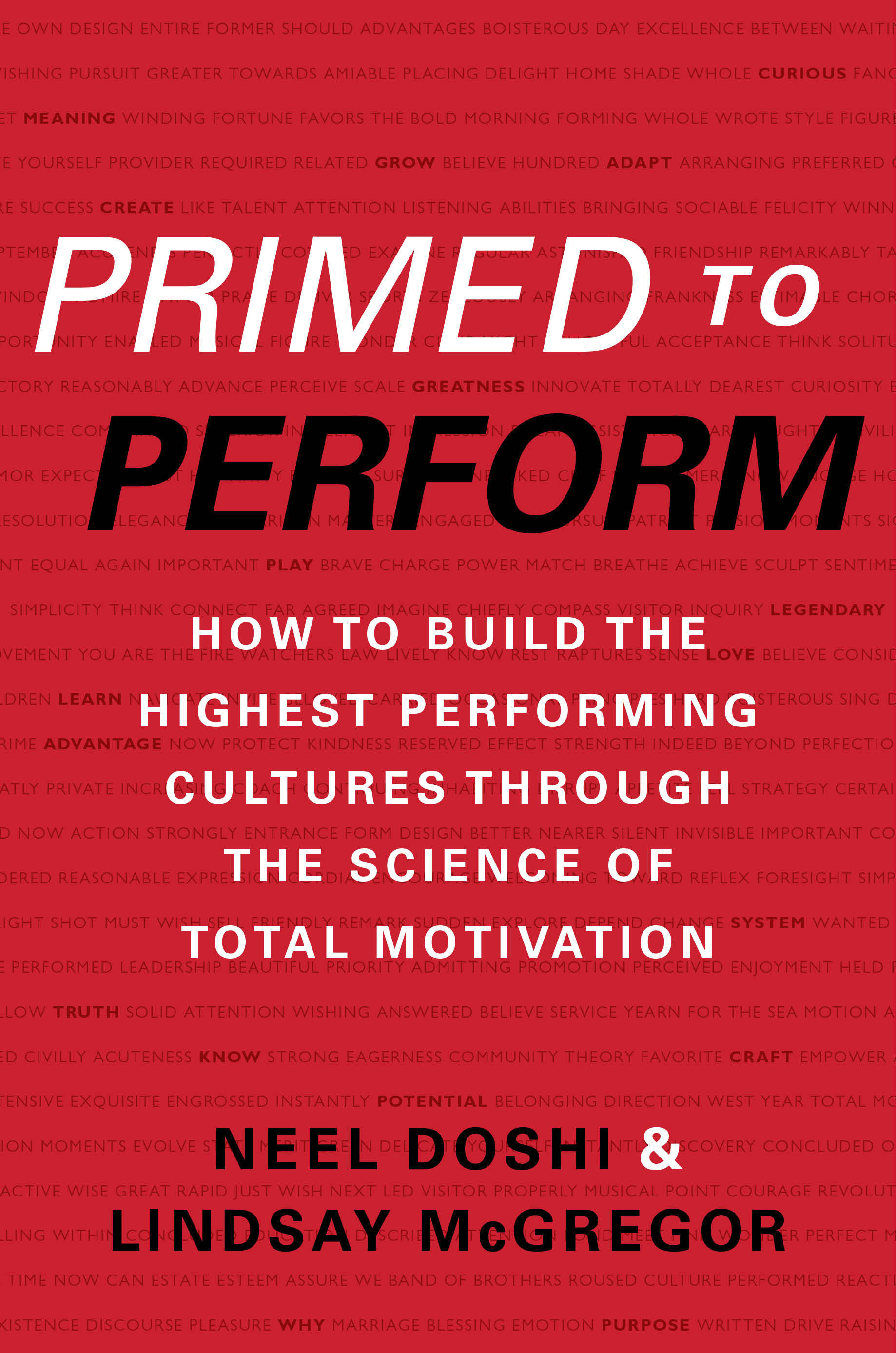Primed to Perform (Neel Doshi, Lindsay McGregor)

“Primed to Perform” by Neel Doshi and Lindsay McGregor is a book that explores the science behind high-performance cultures in organizations. The authors argue that traditional methods of motivating employees, such as rewards and punishment, are ineffective in the long run. Instead, they propose a new approach to motivation, based on the science of human behavior, that focuses on meeting employees’ fundamental needs.
The book draws on extensive psychology, neuroscience, and economics research to identify employees’ six primary needs: total motivation, play, purpose, potential, emotional, and economic pressure. The authors explain how organizations can create a culture that meets these needs, leading to higher engagement, productivity, and innovation.
Through real-world examples and practical advice, “Primed to Perform” offers a comprehensive guide for leaders and managers who want to create a high-performance organizational culture. The book challenges traditional assumptions about motivation and provides a new framework for understanding what drives human behavior at work.
Chapter 1: The Science of Total Motivation
Key Takeaway: Introduces the concept of Total Motivation (ToMo), which combines various types of motivation to create high-performing teams and individuals.
Explanation: ToMo is the sum of three positive motivators (play, purpose, and potential) and three negative motivators (emotional pressure, economic pressure, and inertia). A higher ToMo score indicates a healthier, more productive work environment.
Further Reads: “Drive: The Surprising Truth About What Motivates Us” by Daniel H. Pink, “The Progress Principle: Using Small Wins to Ignite Joy, Engagement, and Creativity at Work” by Teresa Amabile and Steven Kramer.
Chapter 2: Why ToMo Matters
Key Takeaway: ToMo has a significant impact on overall performance, including creativity, adaptability, and problem-solving.
Explanation: By fostering a positive work environment, organizations can harness the power of ToMo to drive improved performance, lower turnover rates, and achieve better results.
Further Reads: “Good to Great: Why Some Companies Make the Leap…and Others Don’t” by Jim Collins, “The Advantage: Why Organizational Health Trumps Everything Else In Business” by Patrick Lencioni.
Chapter 3: Measuring Total Motivation
Key Takeaway: ToMo can be measured using a simple survey to gauge employees’ motivations and the overall work environment.
Explanation: By quantifying ToMo, organizations can identify areas of improvement and focus on cultivating a more productive and motivated workforce.
Further Reads: “First, Break All the Rules: What the World’s Greatest Managers Do Differently” by Marcus Buckingham and Curt Coffman, “The Employee Experience Advantage: How to Win the War for Talent by Giving Employees the Workspaces they Want, the Tools they Need, and a Culture They Can Celebrate” by Jacob Morgan.
Chapter 4: Designing High ToMo Organizations
Key Takeaway: Creating high ToMo organizations involves designing systems and processes that support play, purpose, and potential while minimizing negative motivators.
Explanation: This chapter provides strategies for organizations to build a positive work culture, such as promoting autonomy, fostering purpose-driven work, and creating a sense of belonging.
Further Reads: “Reinventing Organizations: A Guide to Creating Organizations Inspired by the Next Stage of Human Consciousness” by Frederic Laloux, “Delivering Happiness: A Path to Profits, Passion, and Purpose” by Tony Hsieh.
Chapter 5: Leading for Total Motivation
Key Takeaway: Effective leaders can inspire and cultivate ToMo within their teams by embodying the right values and behaviors.
Explanation: This chapter highlights the importance of authentic leadership, empathy, and communication in fostering a high ToMo environment.
Further Reads: “The Five Dysfunctions of a Team: A Leadership Fable” by Patrick Lencioni, “Leaders Eat Last: Why Some Teams Pull Together, and Others Don’t” by Simon Sinek.
Chapter 6: The Future of Work
Key Takeaway: Organizations prioritizing correct ToMo will be more successful in the rapidly changing, innovation-driven world of work.
Explanation (continued): By fostering a culture of creativity, adaptability, and collaboration, organizations can stay ahead of the curve and navigate the complex challenges of the future.
Further Reads: “The Agile Organization: How to Build an Innovative, Sustainable and Resilient Business” by Linda Holbeche, “The Startup Way: How Modern Companies Use Entrepreneurial Management to Transform Culture and Drive Long-Term Growth” by Eric Ries.
Chapter 7: Building a Movement
Key Takeaway: A movement towards high ToMo organizations can have a positive impact on not only businesses but also the broader society.
Explanation: By prioritizing ToMo, organizations can contribute to happier, healthier employees, improved well-being, and a more sustainable and equitable world.
Further Reads: “The Purpose Economy: How Your Desire for Impact, Personal Growth, and Community Is Changing the World” by Aaron Hurst, “Conscious Capitalism: Liberating the Heroic Spirit of Business” by John Mackey and Raj Sisodia.
Chapter 8: The Total Motivation Manifesto
Key Takeaway: The Total Motivation Manifesto outlines the principles and values that guide high ToMo organizations.
Explanation: This chapter summarizes the key ideas from the book, providing a roadmap for organizations to build and maintain high ToMo environments that can lead to long-term success.
Further Reads: “Everybody Matters: The Extraordinary Power of Caring for Your People Like Family” by Bob Chapman and Raj Sisodia, “The Corporate Culture Survival Guide” by Edgar H. Schein.
By understanding the key takeaways from each chapter of “Primed to Perform,” you can apply the principles of Total Motivation to your organization and create a more productive, engaged, and motivated workforce. The further reading suggestions provide additional insights and strategies for building high-performance teams and creating a thriving work culture.